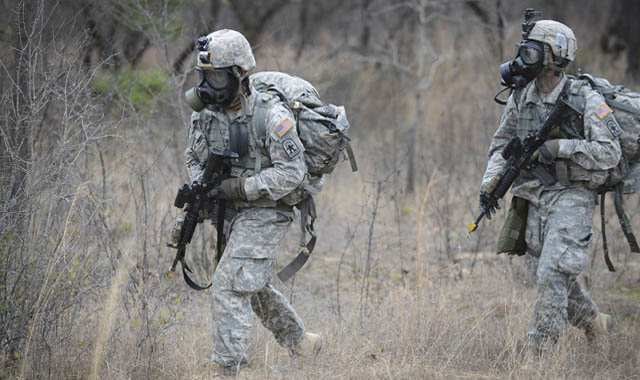5 Critical Reasons to Introduce Live-Agent Testing Early in Product Development

Live-agent testing is the ultimate standard for validating the performance of chemical and biological (CB) defense material, equipment and systems.
Conducting these tests early in product development holds significant advantages to manufacturers—as well as to the end users of the products. Yet, historically, CB product developers have conducted live-agent testing near the end of the development process, after significant investments have already been made in research and development.
Here are five critical reasons to introduce live-agent testing early in the CB product development process.
1. Early live-agent testing validates technology performance
Live-agent testing is far better than surrogate testing using CB simulants. That’s because of the critical nature of the end use of the items.
Simulants are only able to represent a portion of the chemical and physical properties of agents. Using a simulant to evaluate a detector or decontaminant only tells the developer that their equipment works against that simulant, not necessarily against the actual threat.
In contrast, live-agent testing involves controlled-environment exposure of developmental gear or equipment to actual biological threats—such as anthrax or ricin, sarin (GB), distilled sulfur mustard (HD), as well as other advanced threats. This rigorous testing procedure, when done correctly, allows manufacturers to fully vet and validate their equipment or materials.
2. Early live-agent testing reduces product development costs
Often times, the live-agent test data can provide critical input into the development process to identify limitations that need to be addressed or areas where development efforts should be focused.
“Live-agent testing validates materials prior to production, and product post-production greatly reducing risk exposure,” said a current Battelle client.
Manufacturers must be keenly aware of the technology requirements as they relate to the testing. Incorporating evaluations against these requirements early in the process offers reduced risk to the overall development program. If checks against final requirements are not done, time and resources could be grossly misspent.
At a minimum, early testing against live-agents will provide the confidence needed to continue with product investment.
3. Live-agent testing helps manufacturers meet government customer requirements
Live-agent testing can help a manufacturer’s product ascend the ladder of technology readiness levels, which can result in a product that is more attractive to a government buyer.
For example, early efficacy testing of fabrics and systems can ultimately save manufacturers time and money. That’s because they’ll know in advance whether their technology is able to meet DoD requirements or gain sufficient data to make improvements and investment decisions.
This can provide a differentiating factor when competing for government buyers. Products and technologies with live-agent performance data associated with them are also much more likely to garner government investment dollars to offset the internal costs associated with further development.
Similar to reduced risk to the developer, an offering with live-agent test data offers a reduced risk to the government buyer, ultimately making it an attractive investment.
4. Live-agent testing gives manufacturers a marketing advantage
Obtaining live-agent performance data for developmental and existing technologies creates market potential that would not otherwise exist for a CB defense technology.
“One can test with simulants ad nauseam, but one never knows how a sensor will perform with the real chemical warfare agent until one tests it,” said a chemical warfare agent detectors manufacturer.
Having data in hand regarding the most critical performance parameters allows companies to quickly identify and evaluate emerging opportunities and markets that may fit their capabilities. The existing live-agent performance data can be analyzed against potential opportunities to determine technology fit.
5. Gain the competitive edge for your products
Live-agent testing is vastly superior and far more operationally relevant than testing a technology against only simulants. Adding live-agent testing early into the product development cycle can validate performance, reduce costs, better prepare manufacturers to meet government requirements, and create competitive advantages.
Learn more about this type of testing by downloading our whitepaper, “Early Live Agent Testing: The Competitive Edge for Manufacturers Specializing in Chemical & Biological Defense Equipment.” Inside, you’ll learn why live-agent testing is the gold standard for validating equipment performance, why testing with CB stimulants isn’t good enough, and what you need to look for in a testing partner.
BATTELLE UPDATES
Receive updates from Battelle for an all-access pass to the incredible work of Battelle researchers.